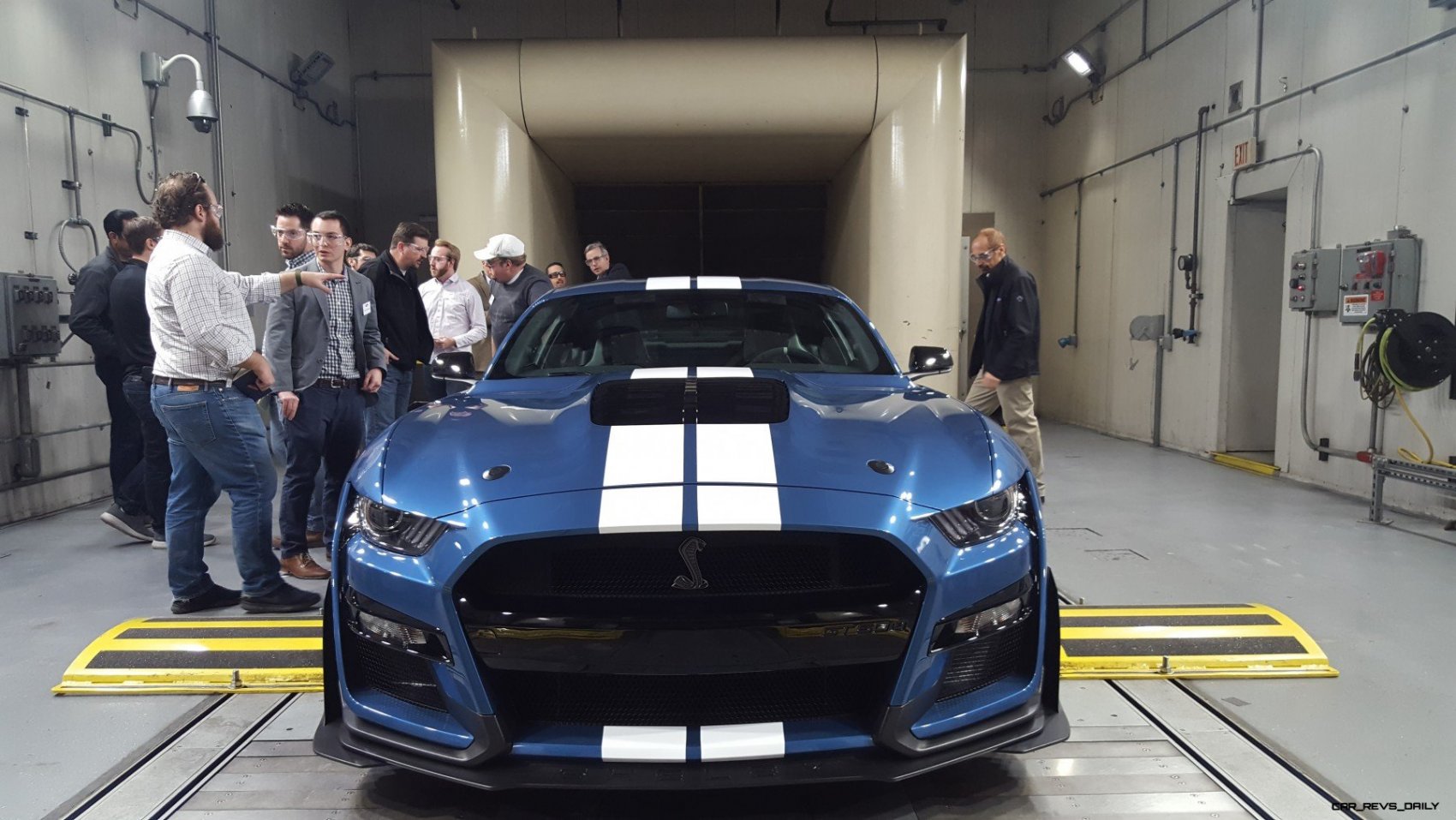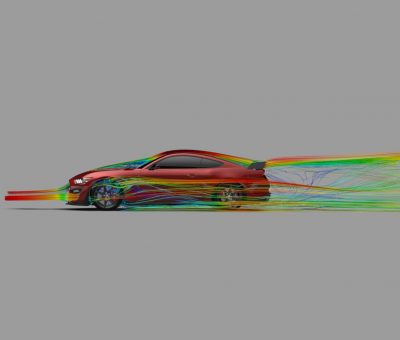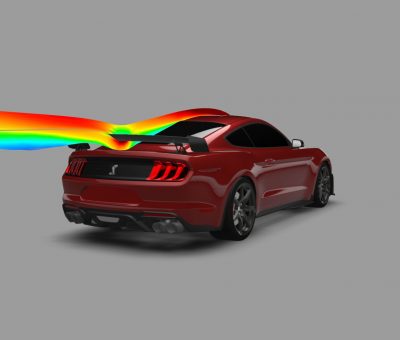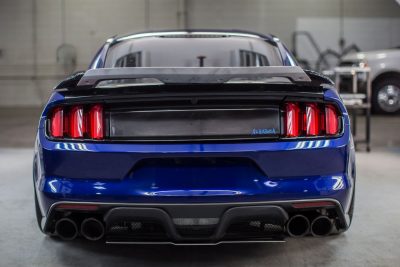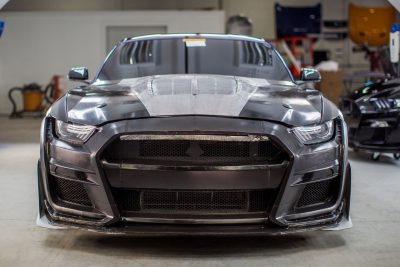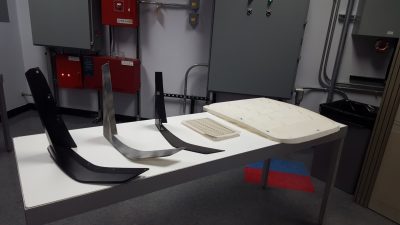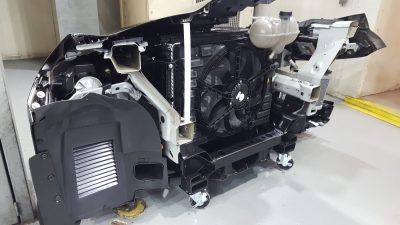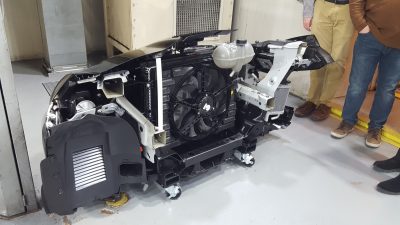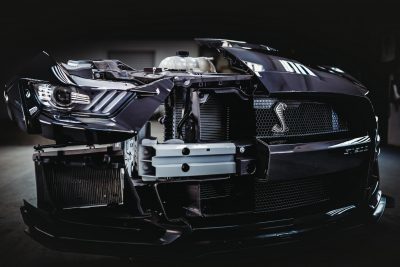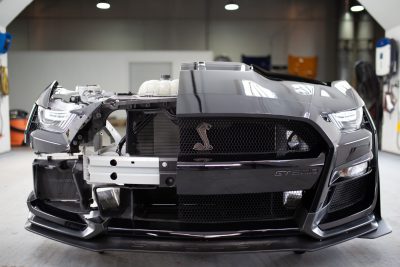It’s no secret that the 2020 Ford Mustang Shelby GT500 is going to be the fastest Mustang that Ford has ever built, with the company being very confident in its ability to trounce Camaro ZL1s and Dodge Challenger Redeyes out on the track. But while Ford is still keeping the vaunted horsepower figure for the GT500 a closely guarded secret, the Detroit auto giant has released new details on some of the behind the scenes engineering that took place to help make sure that the GT500 could meet its full potential in hard track driving.
Wheras the last generation GT500 was a 662 horsepower straight line rocket ship that could scorch its way through the quarter mile, but forced drivers to put handling and twisty corners on the back burner to achieve it, the 2020 GT500 aims to be a more comprehensive package. To find out how, we visited one of Ford’s Detroit wind tunnel facilities to see for ourselves just how the 2020 version will deliver on this promise. Ford claims that this iteration will be “the fastest production Mustang left and right” and it achieves this thanks in part to a heavily revamped aero package. When put in its full track day setting, the GT500 produces 550 lb-ft of downforce, which is more than any other Mustang, and even manages to beat the 300 lb-ft of downforce generated by the GT350R. This is a pretty impressive number, and Ford is confident that it will allow the GT500 to be able to slay corners with far more efficiency than ever before. Top speed does decrease a bit to 180 mph, but we suspect the trade off will be well worth it.
But while 550 lb-ft of downforce is a very impressive achievement, Ford appeared to be even prouder of the sheer speed of the development process which is an impressive feat in and of itself. The company claims that thanks to 3D printing as well as simulations produced by advanced super computers, it was able to develop the aero package in only six months, versus the two years or so that it typically takes to complete a project of its type. Engineers would 3D print version after version of various parts including the hood vent, splitter wicks, and other aerodynamic bits with each print representing a subtle tweak or alteration over the piece that preceded it. The lone exception was the massive carbon fiber rear wing, which was lifted from the Mustang GT4 race car virtually unchanged.
With all of this 3D printing and rapid changes to components, a sturdy and flexible test bed was needed. Thankfully, Ford engineers were able to rescue an old GT350 test car from Rousch, and instead of taking its last ride to the crusher, the car was used as a test dummy that allowed the engineers to fit and fine tune the placement of every single aerodynamic component before the project ultimately transitioned to formal test vehicles.
Matt Titus an engineer that worked with Ford Performance on the development of the aero package revealed that a lot of lessons were learned from the GT350 and that “we took everything we learned on the GT350 and turned it up.” Titus also revealed that Ford is hoping to appeal to a broader audience with this model, and hopes to create a package that is a lot less intimidating to drive than other performance infused models. “We want this car to be available for everyone to drive fast near the limit.” “We’ll learn how that effort turned out when we get behind the wheel for the first time.”
Along with the aerodynamics, cooling for key components was also a major concern during the GT500’s development especially with forced induction being a crucial part of the engine’s performance. The front opening for example is roughly double the size of a GT350, while larger coolers (engine, oil, transmission, etc) are hidden behind the new front fascia which also boasts a 600 watt electric fan that is larger than before. With all this heat, Ford engineers decided to borrow the thermostat from the Ford Super Duty, which is paired with larger radiators that are nestled behind the large mesh front grille. Big brake ducts also snake their way through the front bumper to help channel cool air to the beefier brake discs, this helps them stay cool longer when they are pushed through their paces at the track.
The hood vent in particular proved to be a formidable engineering challenge for Ford, with multiple 3D prints required to get the right combination of size and practicality. The final result is the largest hood vent ever offered on a Mustang, and it is so massive, that it actually required its own separate rain tray. Ford reps revealed that it is best to have the rain tray in when it is parked or when you are out driving in the wet stuff. Otherwise, owners run the risk of rain water entering areas of the engine where it shouldn’t be (i.e in the electrical components.) This extreme measure may seem a bit comical at first glance, but this tray was actually a key component that engineers pushed very hard to obtain to in an attempt to generate optimal cooling. Drivers can take solace knowing that unlike many other sports cars, the hood vents on the GT500 are 100 percent functional, though Ford suggests that owners put the rain tray in place when leaving the track and making the trek home.
The saga of the rain tray highlights some of the unique charm that comes infused into the 2020 Shelby GT500. Unlike other performance offerings, there is no such thing as a “Normal” mode for the transmission, with drivers getting to choose from two simple options (Track and Street.) When driven out in the street, the rain tray gets put in, the lowest front splitter is removed, and the rear spoiler can be tuned to its lowest downforce setting. Ford claims that this helps the GT500 get its best fuel economy, but with over 700 horsepower on tap, we suspect that obtaining optimum fuel economy will be the last thing on the minds of many of its owners, especially those letting the car sink its fangs into a tight turn at a weekend track day.

Carl Malek has been an automotive journalist for over 10 years. First starting out as a freelance photographer before making the transition to writing during college, his work has appeared on numerous automotive forums as well as websites such as Autoshopper.com.
Carl is also a big fan of British vehicles with the bulk of his devotion going to the Morgan Motor Company as well as offerings from Lotus, MG, and Caterham. When he is not writing about automobiles, Carl enjoys spending time with his family and friends in the Metro Detroit area, as well as spending time with his adorable pets.

